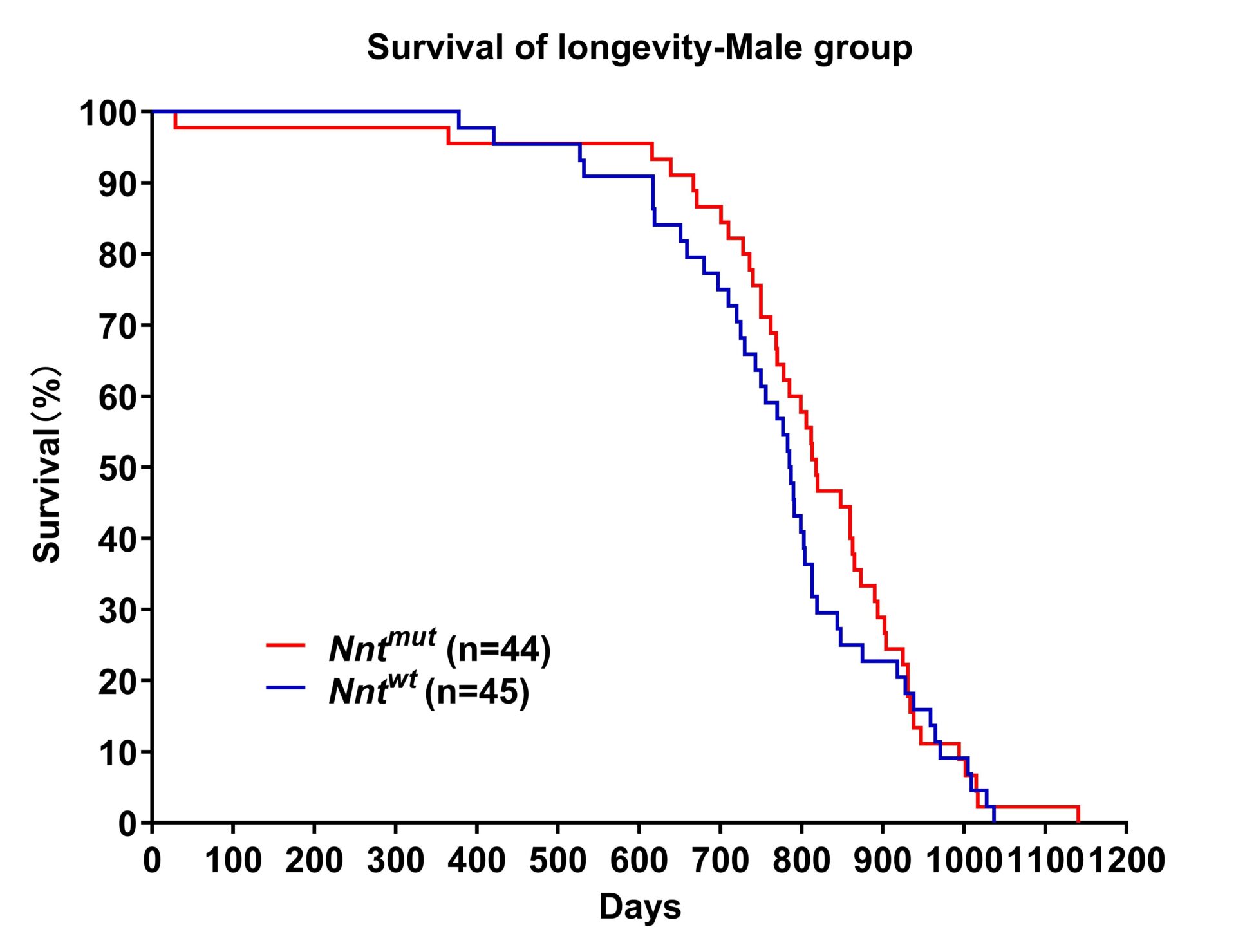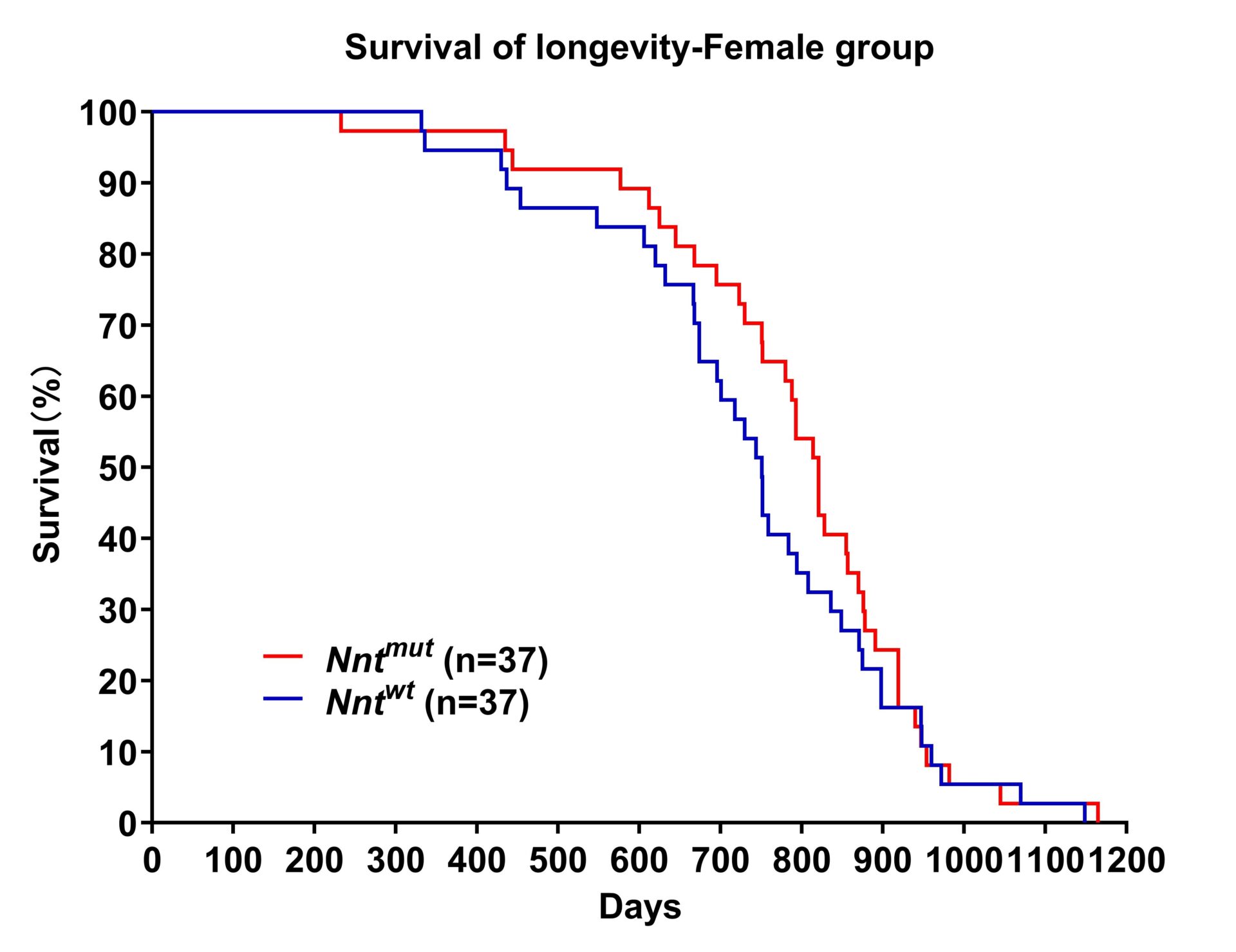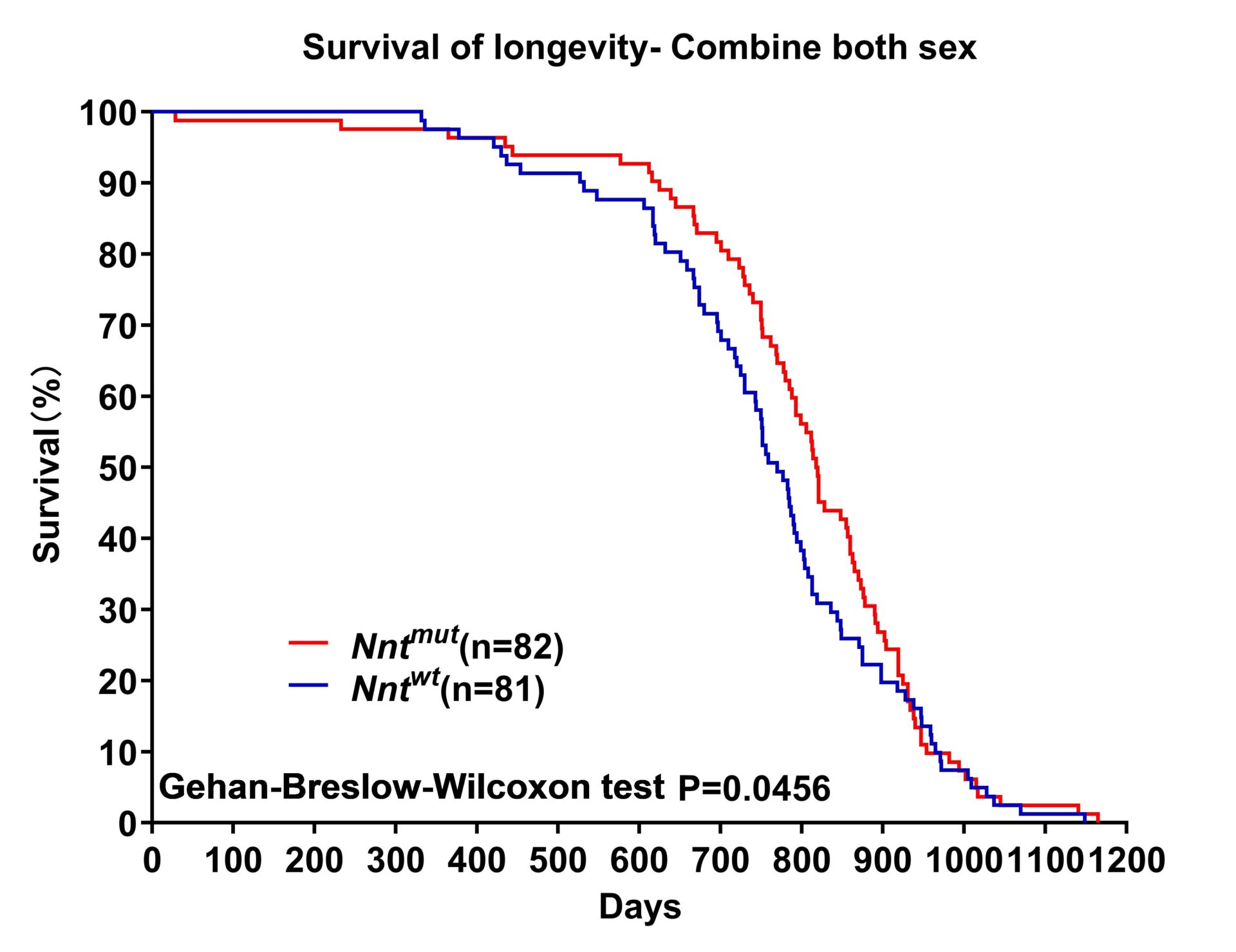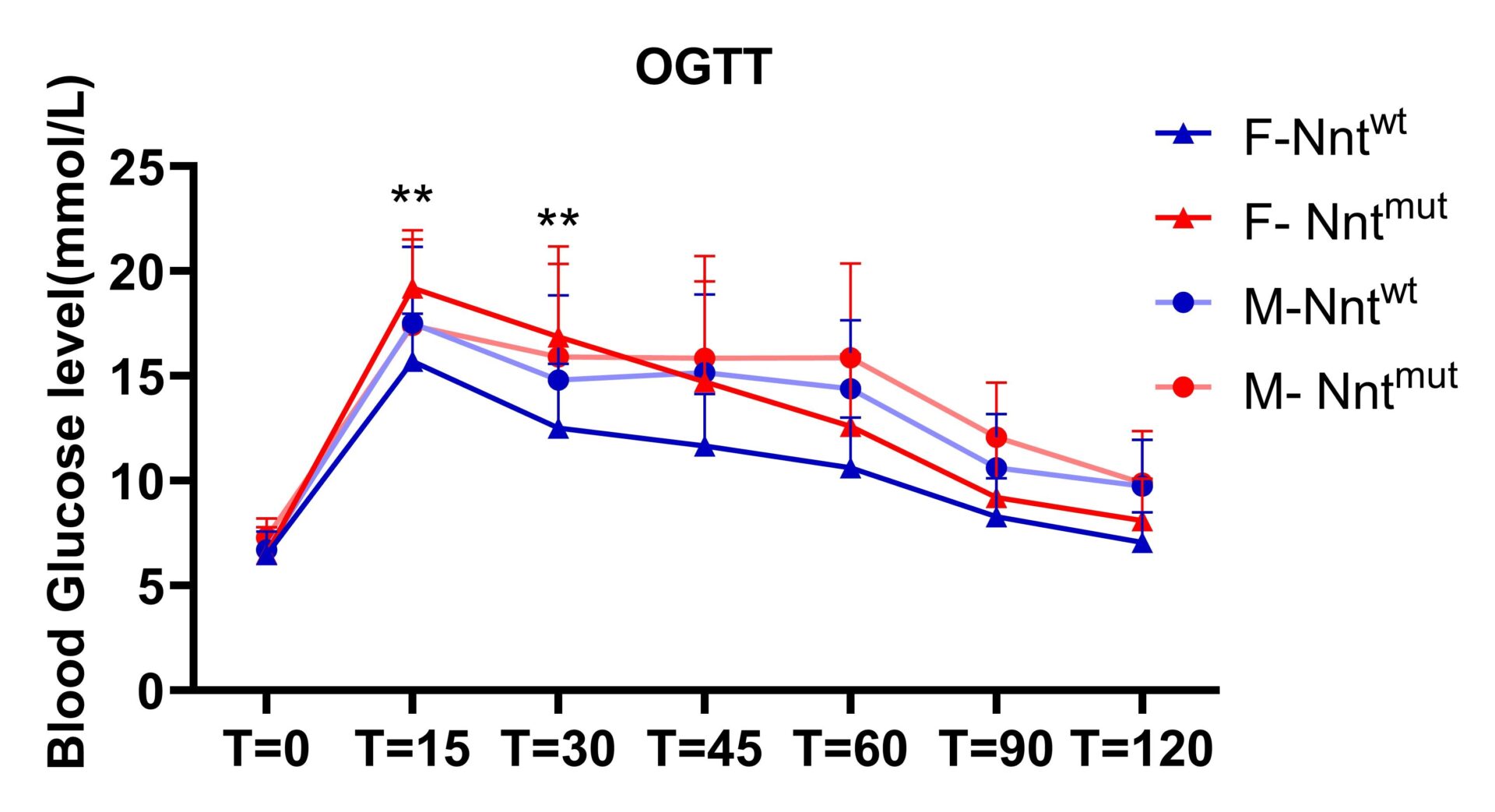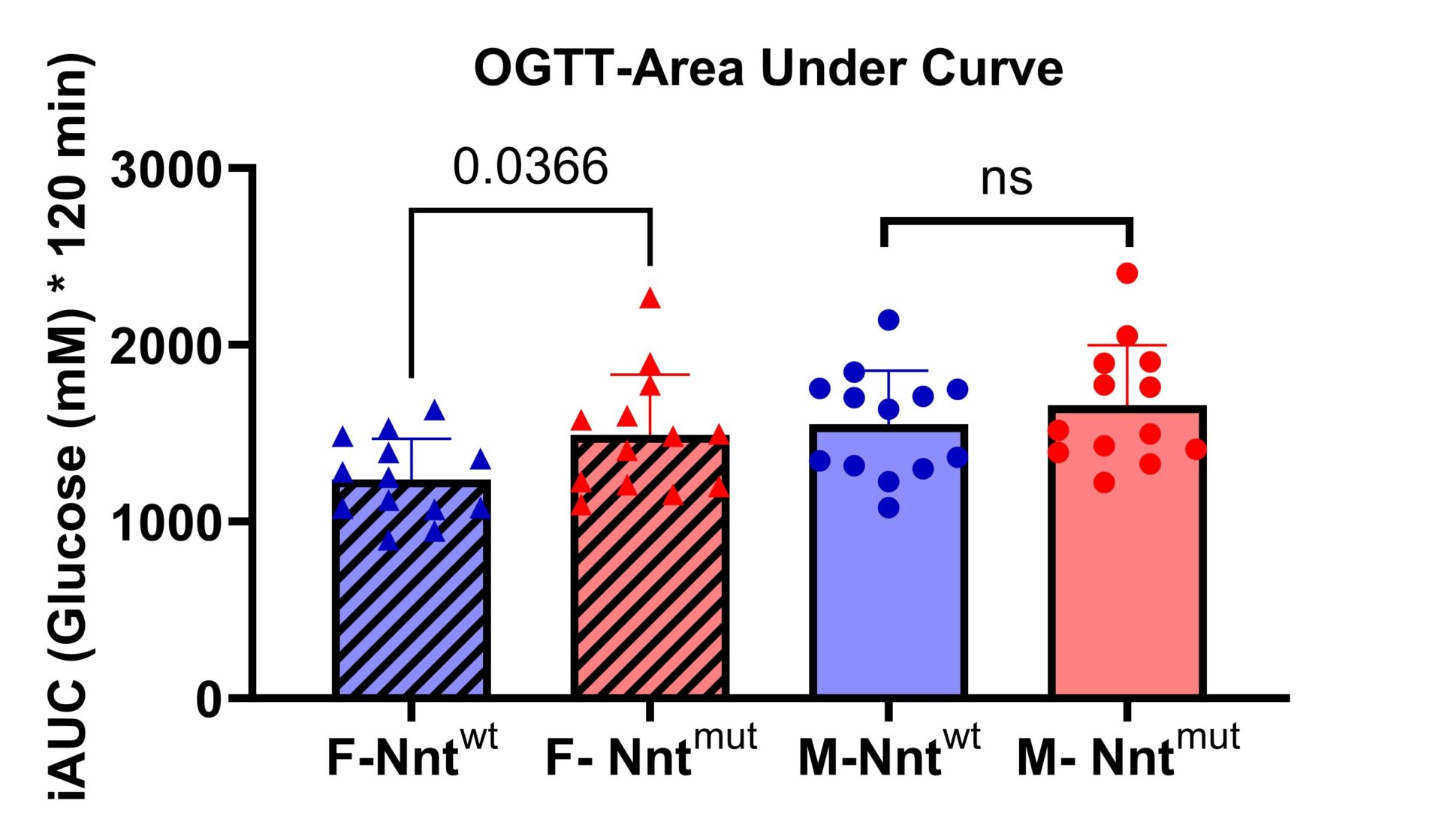Introduction:
Age-related decline in skeletal muscle mass and function, leading to sarcopenia, significantly impacts the quality of life among the elderly, which becomes increasingly prevalent in modern society. Aging correlates with decreased mitochondrial energy production and increased production of reactive oxygen species (ROS). Healthy cells actively balances ROS production and detoxification using NADPH-dependent antioxidant defence systems. A major mitochondrial source of NADPH is nicotinamide nucleotide transhydrogenase (Nnt)(Chortis, Taylor et al. 2018). Nnt expression level decrease with age and this study focus on the role of Nnt in energy metabolism and muscle physiology during aging.
Objectives:
- To investigate the role of Nnt on the lifespan of B6JRccHsd mice and the link between longevity and muscle transcriptome changes at early life.
- To investigate the role of Nnt in glucose tolerance and muscle insulin signalling in B6JRccHsd mice during aging.
- To reveal the effect of Nnt on the muscle molecular metabolic and bioenergetic signatures in young, adult and old B6JRccHsd mice exposed to an acute (6 hour) hypoxia exposure.
Method:
The experimental protocol for animal handling in accordance with the EU Directive 2010/63/EU for animal experimentation and approved by the Animal Welfare Committee of Wageningen University, Wageningen, the Netherlands (2020.W-0019.001 and 2020.W-0019.004).
Our study employs a unique mouse model, C57BL/6JRccHsd, with Nntwt (wild type) and Nntmut (mutation) in an identical genetic background. For objective 1, all mice (Female-Nntwt: n=37; Female- Nntmut: n=37; Male-Nntwt: n=45; Male- Nntmut: n=44 ) received ad libitum water and food until human end point criteria (HEP) was reached. Transcriptome analysis will be performed on M. gastrocnemius from mice used for objective 2. In objective 2, all mice (n=13) will be analysed for functional (EchoMRI, oral glucose tolerance test(OGTT), Rotarod, and Inverted Mesh Hanging Test), histological and molecular analysis at multiple time points (24 days, 3, 6, 12, 18, 21 and 24 months). Additionally, mice will undergo a 6-hour hypoxic exposure via our Indirect Calorimetry (InCa) setup for objective 3 and to calculate the respiratory exchange ratios (RER) (van der Stelt, Shi et al. 2022).
Results:
Longevity study did not reveal significant changes in the medium and maximum lifespan(Fig.1). However, when focusing on the early life survival of both female and male mice as a single group(c: n=81; Nntmut: n=82), the Gehan-Breslow-Wilcoxon test showed a significant improved early survival with the Nntmut (Fig.2). Three months old female Nntmut mice showed significantly higher glucose level compare to Nntwt mice (p<0.05) (Fig.3). Future steps involve confirming insulin insensitivity and defective glucose handling in other age groups, exploring skeletal muscle metabolism in mice of different ages after a 6-hour hypoxia treatment and exploring associations between longevity and muscle transcriptome changes by RNAseq and other molecular techniques.
Conclusions:
Nntmut positively affects the early life survival of both female and male mice as a single group, without an effect on maximum life span. Female Nntmut mice exhibits impaired glucose tolerance at the age of 3 months. Overall, this research aims to study the role of Nnt in mice energy metabolism and muscle metabolic health during aging.

